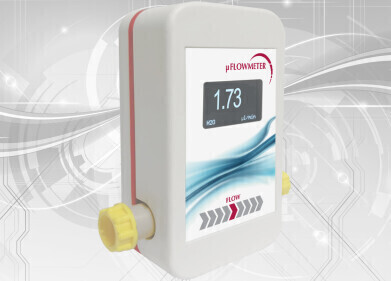LC-MS
Preventing Vitamin D Deficiency in Infants - with the Help of Chromatography
Aug 13 2020
Vitamin D is an essential nutrient for humans. It helps to maintain healthy bones and teeth and may play a role in helping to prevent several diseases and conditions. Vitamin D deficiency can lead to bone deformation in children, a condition known as rickets, and in adults it can cause a condition called osteomalacia – a disease characterized by the softening of bones.
To ensure infants get the best start in life it is essential that both mother and infant get enough vitamin D. For both the foetus and infants, the main source of vitamin D is from the mother – through the umbilical cord and then from breast milk. A recent study by researchers in Norway and published online in the journal Nutrients has validated a LC-MS/MS method for the analysis of vitamin D and its metabolites which can also take into account the impact of 3-Epi25(OH)D3 when assessing vitamin D levels.
Vitamin D in mother and infant
Vitamin D is a crucial nutrient in bone metabolism and development. It helps to regulate the amount of calcium and phosphate in the body which are important for muscle, tooth, and general growth. The nutrient allows the intestines to absorb calcium and reclaim calcium from the kidneys that would otherwise be lost. It is also thought that vitamin D plays a role in the immune system and helps to regulate insulin levels.
Research suggests that low vitamin D levels in pregnancy leads to an increased risk of preeclampsia and could also be a contributing factor in pre-term births. Low vitamin D during pregnancy can also affect infants after birth, with some research highlighting an increased risk of food allergies within the first two years of birth if the mother had low vitamin D during the pregnancy. So, it is important that vitamin D levels can be measured accurately during pregnancy, and in infants and their mothers.
Chromatography highlights deficiencies
The Norwegian researchers developed two selective and sensitive liquid chromatography-tandem mass spectrometry (LC-MS/MS) methods for the analysis of vitamin D and its metabolites. The development of an LC-MS/MS method is discussed in the article, Separation of the 4 Enantiomers of the Fungicide Spiroxamine by LC-MS/MS. And importantly, the methods the researchers developed could quantify the metabolites 25(OH)D2, 25(OH)D3 and 3-Epi25(OH)D3 giving an accurate method of quantifying the concentration of vitamin D in plasma, breastmilk, and infant formula.
The study they made demonstrated the importance of separating the metabolites, particularly the separation of 3-Epi25(OH)D3 from 25(OH)D3. If the two are not separated, then the vitamin D concentration can be overestimated leading to a misclassification of vitamin D status. This can be risky for both mother and infant. The team suggest the monitoring vitamin D metabolites in infant, maternal plasma, and breastmilk to ensure adequate levels in both mother and infant in the first 6 months of infant life.
Events
Apr 22 2025 Kintex, South Korea
Analytica Anacon India & IndiaLabExpo
Apr 23 2025 Mumbai, India
Apr 27 2025 Portland, OR, USA
May 11 2025 Vienna, Austria
May 18 2025 Tempe. AZ, USA













